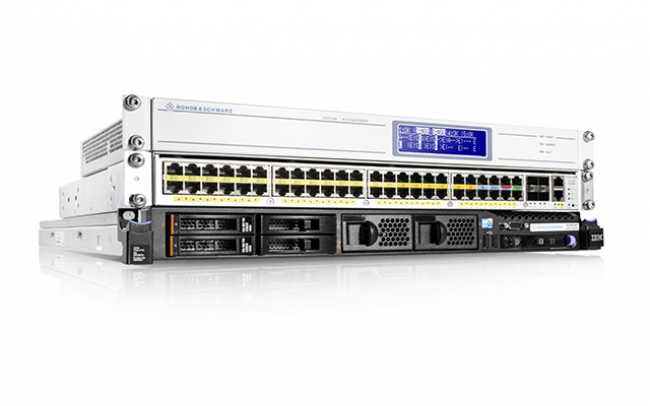Rohde & Schwarz enters A/V headend market with ‘industry-leading functionality’
Published: PRODUCTS

The AVHE100 from Rohde & Schwarz is being introduced by the manufacturer as its entry into the A/V headend market, offering ‘industry-leading functionality in a compact design’.
According to the company, the AVHE100 includes only ‘a few’ hardware components yet integrates all essential headend functions. Included is Rohde & Schwarz’s CrossFlowIP technology to improve redundancy protection against failure.
At the heart of the system are the 2RU AVS100 audio/video server and AVG100 audio/video gateway. All signal processing functions have been implemented with software-based modules in the AVS100 server, while signal distribution and communications inside the headend are fully IP-based – both features intended to simplify installation. Meanwhile, the headend can encode video streams in both H.264 and Mpeg2 format while there is also an option to consolidate the streams into a statistical multiplex.
For simplicity, the integrated headend management system allows users to configure, control and monitor the individual system components via a workflow-oriented GUI (also available in touchscreen format). Additionally, the AVHE100 can be optionally upgraded from DVB-T to DVB-T2 or another successor standard with a software license.
Also marking a first for the manufacturer are the TMU9 and THU9 transmitters which can reportedly reduce energy costs by more than 40 per cent.
The TMU9 is the first air-cooled transmitter to use Doherty technology to significantly increase energy efficiency, while the liquid-cooled THU9 high-power transmitter has also been equipped with Doherty technology to increase its efficiency by another third. Network operators can, the manufacturer states, therefore reduce their energy costs with each of the two transmitters by more than 40 per cent.
The basic principle behind the transmitters is to split signal amplification between two paths. The advantage is that the carrier amplifier amplifies only the average signal. As a result, this path does not require any reserve capacity for power peaks. The peaking amplifier, on the other hand, only operates when the power level peaks, thereby saving energy in both amplifiers.
The TMU9 is reported as achieving output power levels ranging from 570W to 2.85kW for the DVB-T, DVB-H, DVB-T2, ATSC, ATSC Mobile DTV and ISDB-TB standards, all attained using only a single rack. More than 50 different system configurations can be deployed for customised solutions while the MultiTX system makes it possible to install up to six single transmitters in a single rack.
Shipping: Now
Web: www.rohde-schwarz.com
